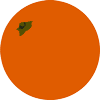fall 2016
Table of Contents
Return to Home PagePenmanship in Catholic School James Valvis
Unquiet Slumbers for the Sleepers Stuart A. Paterson
Indian (4) Blood Quantum (8-9) Jordan Abel
With Their Flicker Fork Tongues, Snakes Taste the Bitter, Bright Air Blue Moon Enters the Street Arleen Paré
That Night She Happened So Easy Nicomekl River Claire Matthews
Notes From a Relationship with Hades (#1)![]() Cindy Pereira
Cindy Pereira
sometimes old name warning: leaf kotasek
After Jim Morrison, May 1985![]() Manny Blacksher
Manny Blacksher
Tuesday Shared Accommodation Shaun Robinson
A Little Soap Work![]() Leena Niemela
Leena Niemela
Livingston Cape Celyn Adam Day
12:33 AM![]() What Colour is That?
What Colour is That?![]() Mormei Zanke
Mormei Zanke
Certain Things You Should Know About Rusty![]() Kathleen M. Heideman
Kathleen M. Heideman
10 words repeated![]() Falcon oHara
Falcon oHara
common time![]() cloud variations
cloud variations![]() Rachelle Pinnow
Rachelle Pinnow
* (You test each hole for winter) * (Your shadow spreads across) * (Shielding your lips this stone) Simon Perchik
Sigmund Freud, Action Figure Meghan Bell
